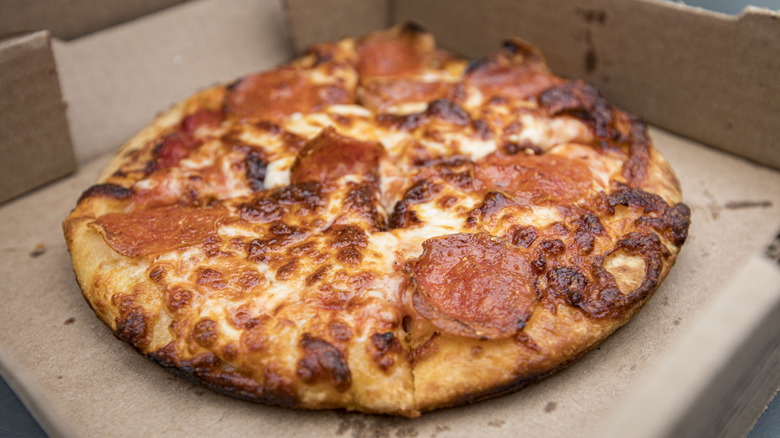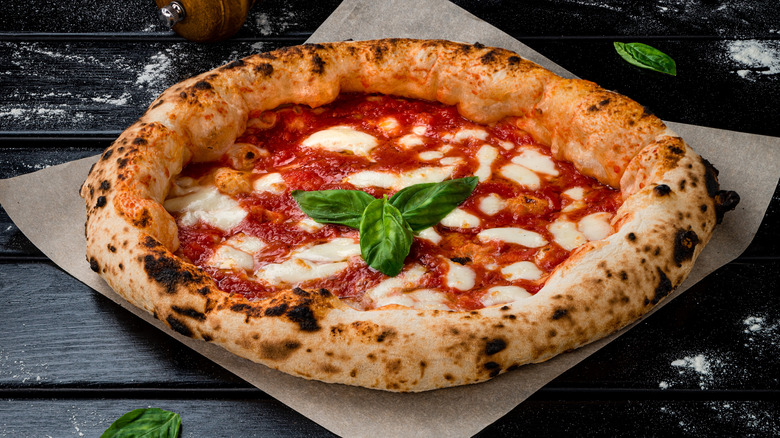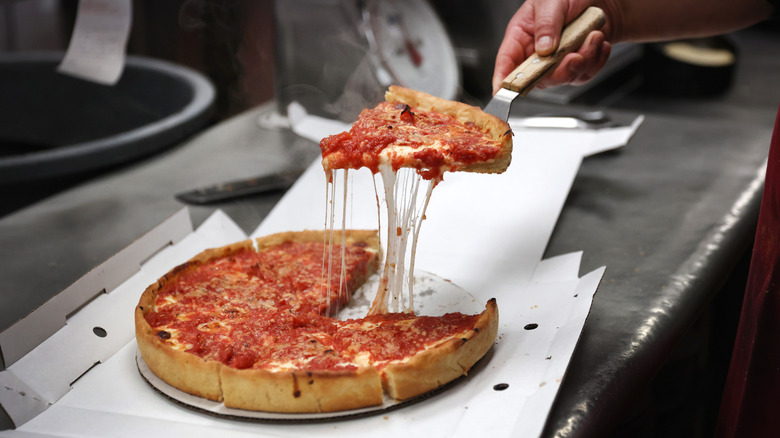How Pizza Came To America And Stole Our Hearts (And Stomachs)
I'm one of the guilty Americans who grew up ignorant of the fact that most foods we have in America are not rooted in this country. Without knowledge of the melting pot that is the great U.S. of A., many people don't learn until maybe high school that certain fan favorites are not at all our invention. A case in point is pizza, which came over with Italian immigrants in the late 1800s and early 1900s.
Back then, pizza was homemade, and not a trendy dish; it was just a simple, affordable food people baked at home or grabbed from a small bakery in Italian neighborhoods. Pizza started gaining traction in New York, particularly in places like Little Italy, where Italian immigrants brought their food traditions with them. By 1905, the first licensed pizzeria, Lombardi's, opened in Manhattan. From there, the love for pizza grew fast. It started popping up in more cities, slowly moving from Italian enclaves into the wider American food scene.
The post-war boom and pizza's rise to fame
Once World War II ended, pizza exploded in popularity. Veterans who'd tasted it in Italy came home with a new craving, and suddenly this dish from the old country felt exciting and different — but still familiar enough to catch on. By the 1950s, pizzerias were popping up all over the place, and they weren't just family-run shops anymore. Pizza chains started forming, bringing consistency and convenience to the table. You could walk into a place, get a hot slice for cheap, and be on your way. It was fast, customizable, and hit every note of comfort food.
This was also the decade when frozen pizza was introduced. It lets people bring that same cheesy satisfaction into their own kitchens without needing to leave the house. Then came delivery. By the time the 1980s rolled around, pizza was firmly planted in American life. It became party food, weeknight dinner, post-game fuel, and late-night snack all rolled into one. The beauty of pizza is that it adapts. From thin crust to deep dish, meat-loaded to veggie-heavy, it fits just about any taste. That flexibility, paired with the nostalgia it holds for generations of Americans, is why it's still such a staple. Pizza didn't just fit into American culture — it helped shape it.
A national obsession with local roots
Nowadays, pizza is everywhere, and we certainly have changed it a lot. The early versions didn't look like what you'd see on a delivery menu today. I lived in Italy for 11 years, and it is nothing like American pizza. The crust in Italy is usually very thin, the sauce is more simplistic in terms of flavor, and the cheese doesn't spill over. Also, there aren't a zillion toppings to choose from like the pizzas in America.
But no matter how commercialized America's pizzas have become, they still hold that original spirit. You'll find regional variations in nearly every corner of the country: New York's foldable slices, Chicago's deep dish, Detroit's crispy-edged squares, and California's everything-goes toppings. People take pride in their city's style and defend it like it's part of their identity. Whether the pizza is cheap or expensive, there's something for everyone.
Even though it's easy to grab a slice just about anywhere, pizza still sparks creativity. Home cooks experiment with new toppings and crust styles, and small-batch pizzerias keep the craft alive. With choices like wood-fired, gluten-free, or topped with pineapple, pizza keeps evolving without losing what made it great in the first place.
It's not just about the food either; pizza brings people together. It's the go-to for birthdays, office parties, study sessions, and lazy nights. There's no need for forks or fancy setups because you just grab a slice and dig in. For something that started as street food in Naples, pizza has found a permanent spot in American life, and it's not going anywhere.


